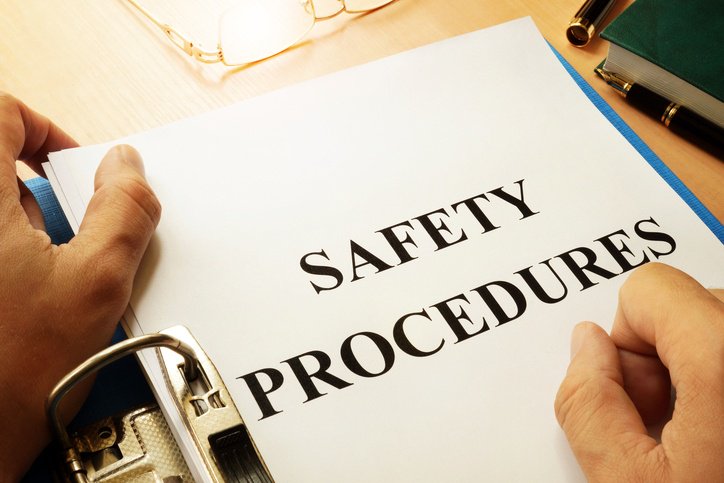Fearing that this publicity would lead employers to discourage employees from reporting injuries and illnesses, OSHA included anti-retaliation provisions in the final rule.
On Oct. 19, 2016, OSHA published an interpretation of how the anti-retaliation provisions affect employee discipline, drug and alcohol testing, and safety incentive programs.
What Are OSHA’s Anti-Retaliation Provisions?
According to OSHA, the final rule does not create additional anti-retaliation obligations for employers but merely clarifies existing law regarding employee anti-retaliation protections. Specifically, OSHA’s anti-retaliation provisions are:
- Require employers to inform employees that they have a right to report work-related injuries and illnesses free from retaliation
- Direct employers to adopt reasonable procedures that employees can use to report work-related injuries and illnesses
- Prohibit employers from retaliating against employees solely because they report work-related injuries or illnesses.
According to the final rule, a procedure or system is reasonable if it’s “not unduly burdensome” and does not “deter or discourage” employees from reporting workplace injuries or illnesses.

On Oct. 19, 2016, OSHA published an interpretation of how the anti-retaliation provisions affect employee discipline, drug and alcohol testing, and safety incentive programs. In this interpretation, OSHA explains that to establish a case of retaliation, OSHA inspectors will need to prove that:
- An employee reported a work-related injury or illness
- The employer took an adverse action against the employee reporting the injury or illness
- The adverse action was taken because of the report and not because of a legitimate business reason
Adverse action includes:
- Discharging, demoting, or denying a substantial bonus or a different significant benefit
- Assigning the employee “points” that could lead to future consequences
- Demeaning or embarrassing the employee
- Threatening to penalize or otherwise disciplining an employee for reporting
- Requiring employees to take a drug test for reporting without a legitimate business reason
What Are the Implications for Employers?
The final rule does not specifically prohibit employers from disciplining employees who are injured on the job because they fail to follow safety procedures. Similarly, the rule does not prohibit drug and alcohol testing policies or the implementation of employee safety incentive programs.
Rather, the anti-retaliation provisions prevent employers from using policies and programs in a way that deters or discourages employees from reporting work-related injuries and illnesses.
What Types of Employee Discipline are Allowed?
Under the final rule, employers can use disciplinary procedures for legitimate business purposes, which means that employers can discipline an employee who violates safety rules or reasonable reporting procedures.
However, disciplining an employee simply because the employee reported a work-related injury or illness would be a violation of the anti-retaliation provisions. It would also be a violation for the employer to inconsistently enforce employee compliance with workplace safety rules and procedures.
To determine whether a particular policy, rule or employee disciplinary action complies with the rule, OSHA recommends that employers consider, among other things:
- The reasonableness of the rule
- Whether an employee had a good reason to deviate from the rule
- Whether the employer has a substantial interest in the rule and on its enforcement
- Whether any disciplinary action taken against an employee is proportionate to the employer’s interest in the rule

When are Drug and Alcohol Testing Allowed?
The final rule prohibits employers from adopting blanket policies that require all employees to submit to drug and alcohol testing after reporting a work-related injury. According to OSHA, requiring (or the threat of requiring) employees to submit to drug and alcohol testing after reporting an injury — regardless of the reasons and circumstances surrounding the incident — is a form of adverse action. OSHA states that mandatory blanket policies are problematic because:
- A blanket policy would require drug testing even for injuries or illnesses that may have no connection to the use of drugs or alcohol
- Employees may not report injuries for fear of having to submit to drug testing procedures
However, the final rule does not prohibit employers from testing employees who are injured at the workplace or adopting drug and alcohol testing policies. The testing must be:
- Conducted in accordance with federal, state or local laws
- Part of pre-employment or random screening initiatives
- Justified by an objectively reasonable basis
What is an objectively reasonable basis?
- Is it reasonable to conclude that drug use could have contributed to the injury or illness?
- Were all employees involved in the incident that caused injury or illness tested?
- Does the employer have an increased interest in determining whether drug use was a factor because of the hazardousness of the work?
OSHA’s interpretation suggests that under these acceptable circumstances, an employer may require injured employees to submit to drug and alcohol testing to qualify for a premium discount from its workers’ compensation insurance carrier if the testing policy and the discount are allowed by, and consistent with, local workers’ compensation laws. The main principle behind this rationale is that employers should use drug and alcohol testing as a tool to evaluate (and possibly eliminate) the root causes of work-related injuries and illnesses, and not as a form of employee discipline.
How Does This Affect Incentive Programs?
Under the final rule, employers may continue to implement employee safety incentive programs to encourage workplace safety and promote more worker participation in safety-related activities. However, withholding a substantial bonus or significant benefit from an employee—solely because the employee reported an injury or illness—is a form of adverse action.
OSHA has long been concerned with employer-sponsored incentive programs that intentionally or inadvertently discourage appropriate reporting of workplace safety incidents. The rationale for OSHA’s concern is that if employees are sufficiently motivated, they will underreport incidents in order to obtain the incentive. For example, an incentive program that rewards employees with a bonus or a prize if there are no injuries reported for at least 90 consecutive days, may discourage employees from reporting incidents solely to receive the bonus or prize.
For this reason, OSHA’s memo outlines that acceptable incentive programs should reward:
- Worker participation in safety program activities and evaluations
- Worker completion of safety and health training
- Reporting and responding to hazards and close calls/near misses
- Safety walkthroughs and identification of hazards
- Conformance to planned preventive maintenance schedules
- Compliance with legitimate workplace safety rules

How Should Companies Approach Enforcement?
Historically, OSHA’s role in enforcing anti-retaliation protections has been reactive, meaning that it could investigate and cite employers only after receiving a retaliation claim.
However, the anti-retaliation provisions allow OSHA to take a more proactive enforcement role. OSHA will not need to wait until a retaliation claim is filed to issue a citation against an employer if OSHA finds that the employer is discouraging appropriate reporting. This is possible because the rule integrates the anti-retaliation provisions into OSHA’s regulations, allowing OSHA to enforce them through its citation process.
In light of increased OSHA penalties and a new, more comprehensive inspection process, OSHA’s ability to cite employers for anti-retaliation violations becomes a greater potential threat to noncompliant employers.
Where Can You Find More Information?
For more information about the anti-retaliation provisions, the electronic reporting final rule or other OSHA compliance questions, contact CoverLink Insurance today. Now is a good time to consult with your insurance advisor to discuss your company’s policies to make sure you are compliant
